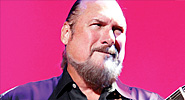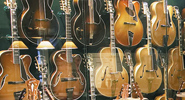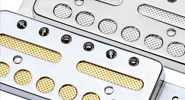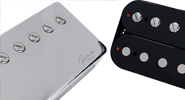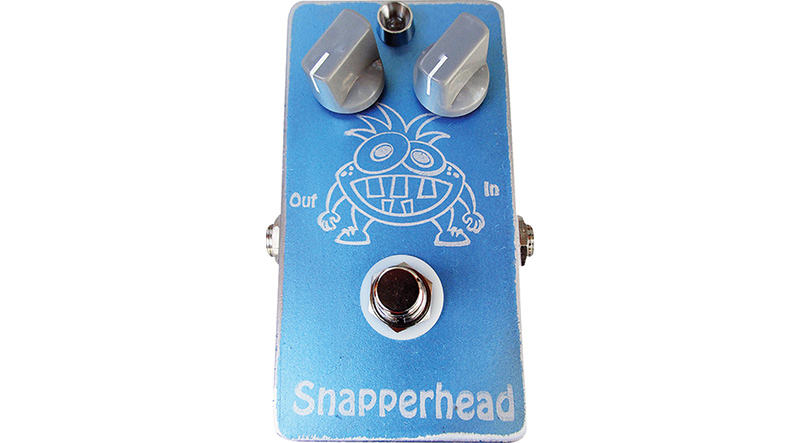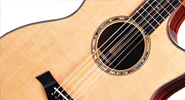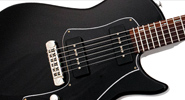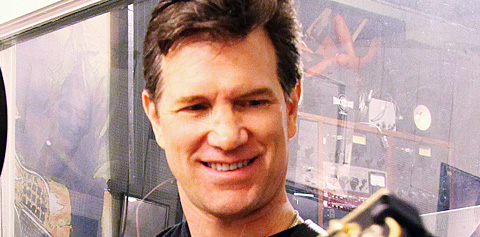
With his new album, BK3, Bruce Kulick brings out the big guns on what he calls his “…strongest solo disc ever.” Collaborating with friends old and new, he infused their personalities to create an album diverse in style and tones. He also raised the bar on his own musicianship. Kulick recently took us behind the scenes of his latest endeavor, explaining how BK3 came together with a mix of guests and a massive assortment of gear. He also brought out a selection of his personal treasures to ogle, including his beloved ’53 Gibson Les Paul – a converted goldtop that originally belonged to his brother, guitarist/producer Bob Kulick.
There’s an incredible variety of styles on this album. Did you write the material over an extended period of time?
Yes, but there would have been a variety of styles, no matter. I started writing after I got shot in October of 2003. A guy who had too much to drink was picking a fight with the bouncer at the Rainbow (night club). He decided to get a gun from his friend’s car and started shooting wildly on the street. One of the bullets ricocheted and went through the fleshy part of my right leg and another one nicked me right above my sideburn. So I was one inch from either being crippled or dead. They rushed me to Cedars-Sinai Medical Center, then sent me home. By then, there were reports on CNN saying “…former Kiss guitar player shot in Los Angeles.” Then the phone was ringing non-stop. Believe it or not, with a bullet wound that goes straight through your leg, it heals from the inside out. You keep it clean, but there are no stitches or surgery! The L.A. police kept my leather pants as evidence, and I never got them back. But they were great, and did put the guy away.
Ironically, the first song I wrote for this record was “I’ll Survive.” The lyrics are about that night; I was very fortunate – blessed – that day. I pretty much started writing from that point on. I wanted to collaborate with [producer] Jeremy Rubolino, who I knew from the early Kiss days, because he’s related to Bob Ezrin. I knew he was talented, and I wanted to see what it would be like to write with him.
And how did it go?
Really well. We wrote a lot of material by the end of 2003 and continued through ’06. In some ways, the music was a little more pop than how the record turned out, I think because once I asked Gene Simmons to be on it, it snowballed into a “featured guest” kind of vibe that worked well. It’s definitely more than just one side of what I can do. And though I can carry a tune, my voice is not my strongest asset. But I did my best singing on this album.

How did you choose guests?
I’d worked with John Corabi in Union, and we work well together. Nick Simmons is Gene’s son, and I’ve known him all his life. I met Doug Fieger, from The Knack, at the Rock ’N Roll Fantasy Camp. Steve Lukather and I have a lot of mutual friends, and I’ve jammed with him before. He came into the project when I decided to include an instrumental track. He did a great job – I’m so proud of that instrumental. I’d worked with Eric Singer in Kiss, and he turned me on to Tobias Sammett, who has a tremendous voice – perfect for “I’m The Animal.” He’s in a couple of very popular groups in Europe.
The guests kind of pushed away some of the early material Jeremy and I wrote. I have four songs recorded with full drums, bass, guitars, and a reference vocal, but they’re unfinished because I thought the formula had to change once Gene, Nick, and John were onboard. They definitely helped set the tone of the album.

Were the guests involved in writing?
All except Doug, who loved what we had with “Dirty Girl,” which is a power pop song. And he really nailed it. Nick wrote the lyrics and some of the melody of his track, “Hand Of The King.” He’s very popular because of the “Family Jewels” TV show and he’s such an interesting guy. He’s brilliant like his father, but he’s also the anti-Gene – so unaffected. He knows everything about all Kiss songs and albums, and he made references to me on Carnival Of Souls, which is really cool because that’s not a “big” Kiss album. He didn’t have a lot of experience in the studio and I think Gene knew he would get some good experience being part of this. He did a great job.
Like I said, I work well with Corabi, and it was Jeremy’s dream to work with him because he loved the last Union album, The Blue Room. John came in with great ideas, and I think it’s one of his best vocal tracks. The song is very strong. Jeremy played acoustic guitar on that one, and some bass, too. He really wanted to play bass on Gene’s song and even borrowed one of his Axe basses, which was funny.
Gene was a pleasure. We had some of the lyrics before we got into the studio, and we had the arrangements. He brought in the film crew from “Family Jewels,” and they set it up as something about Nick, and he did fool around in the vocal booth that day, but we were cutting Gene’s song. Nick’s was done later… but that’s the way reality TV works.
Brent Fitz played drums on almost every song except the instrumental, which was Kenny Aronoff. Eric Singer played on the song that Tobias sang because he introduced us, so that made sense. That track has real strings, which have a texture you can’t reproduce. We also have strings on the last song, “Life,” which was my George Harrison kind of thing.

I have to talk about Lukather, who is a true guitar hero. I can hold my own in the realm of what I do, but this guy pulls out unbelievable stuff – he can play anything! And he’s one of the most humble guys. He came in, didn’t really know the song, and Jeremy and I weren’t sure what we wanted; we had already recorded the theme and the choruses. So the verses and bridge are him, and a little of me. The solo with the modulation is completely him – anything with a wah or whammy bar is him. I played all the Les Paul-type parts that are more theme-oriented. It was really interesting because we just kept having him play and suggested ideas as we went along. He did this Jeff Beck-like thing where he’s making the guitar “talk” by picking close to the bridge. It’s great!
Luke came to the session with one of his signature Ernie Ball guitars, and it was tuned to concert pitch. But the song was in E flat. So I handed him one of my trusty red ESP Vintage Plus guitars, and he sounded like him even though he was playing my guitar through my Marshall 900-series head and all the gear I use.
I bring this up when I do clinics – your sound is in your hands, not so much in the gear. He was a little thrown by the fact that I have a block inside my Floyd, so it doesn’t pull upward; he’s used to having his float. But he got through it and he played great. Kenny Aronoff is kicking ass on that track, and I’ve got Jimmy Haslip, who’s a Grammy-winning bass player. We used to play together with Michael Bolton. Jimmy played my ’66 P-Bass; the engineer was this terrific guy who used to work with Paul McCartney, so I knew he was going to want Jimmy to play the P-Bass. Jimmy is left-handed, but plays bass strung right-handed.
What was the first track you recorded?
It was actually the last song we chose – “Fate.” It came from Kevin Churko, who worked with Ozzy Osbourne on Black Rain and is working on Ozzy’s new album. When he presents a track, he plays everything on it. But I had to make it my own, so Jeremy and I put our stamp on it. Lyrically, the track was supposed to be a little tongue-in-cheek with some Kiss titles, and it’s a cool opening track. I like the way it sets the pace – it says I mean business!

When did you start recording?
Serious recording started in January, 2007, but because of traveling, gigging, doing Grand Funk Railroad gigs, Fantasy Camp, producing other artists that would keep me busy in the studio for two weeks at a time, I just couldn’t get to finishing the record until last May. It was crazy, but I’m very happy with the way it turned out.
Describe your studio setup. Did you have one main rig, or were there various amps for lead, rhythm, and texture tones?
The go-to amps are Marshall heads. The early 100-watt Marshall 900 is my best-sounding head. I have a Marshall Dual Reverb that sounds great; it’s switchable between 100 and 50 watts, and sometimes sounds better at 50 watts. I always use 4x12s with Celestion Vintage 30 speakers, though I do have a 4×10 cab I used a little. If I don’t want a Marshall sound, I have a ’66 Fender Bassman head, sometimes with a little overdrive through the Marshall cabinet. I also have a 2×12 Rivera cabinet with Vintage 30s.
I love my Orange Tiny Terror head. It’s killer, and I used it for some things toward the end of the recording. I also got some sounds out of an Egnator Rebel 20, which is a nice little amp for different textures. Another secret weapon is a Vox AC30 reissue I used on Kiss’ Carnival Of Souls. It’s a great amp.
Anything you hear that’s really crunchy and big-sounding is a Marshall head – the solos were mostly done with Marshall heads. Texture guitars were done with the Vox, the Orange, or the Egnator. And I used the studio’s Soldano one time.

Let’s talk about the guitars that were used.
It was so much fun using so many different guitars! I did a lot of layering tones and textures, just as I had with the amps. I had some of my favorite ESPs, like the red ’90s Vintage Plus models with a humbucker, two single-coils and a Floyd Rose, and two more recent ESP Vintage Plus models. One is black with a Floyd and a humbucker, the other is white and has a standard three-single-coil setup. That one was used on the instrumental.
I had a lot of go-to guitars, like my ’53-conversion Les Paul, which was originally a goldtop with P-90s, but Tom Murphy painted it for me in ’91 or ’92, and he did a beautiful job – really brought out its mojo. It’s a nitro finish [with] a gorgeous sunburst. Even though the split of the maple top is very off-center, the grain is gorgeous. That guitar has a lot of “Kisstory.” My brother bought it in ’74 or ’75 and it had one double-white PAF at the time. I got it from him in the early ’80s and found another PAF for the neck position. The knobs are original, and I found nickel ’50s parts for it. I didn’t care if the tuners weren’t original. My brother used that guitar on Paul Stanley’s solo record in ’78 and probably on the Alive II studio tracks. I used it on “Forever,” “God Gave Rock ’N Roll To You,” and everything on the Union records. I used it a lot on Kiss’ Revenge.
Otherwise, I used quite a few Gibsons. I have a beautiful special edition ’62 reissue SG that was done for Guitar Center with kidney tuners on it, and it has a really good sound. I also used some of my old SGs, like a ’65 Standard, for a few parts. I used a cherry ’61 ES-330 that’s awesome, and a ’65 ES-345 with the Varitone, and I mic’ed up a ’58 ES-175 for some rhythm parts. It originally had one PAF, but someone converted it to a double-pickup. It has one of my favorite necks.
I have a ’58 reissue Les Paul that sounds amazing, and a ’96 Custom Shop goldtop with P-90s that’s got a big neck and a great sound. We needed a 12-string thing, and Jeremy owns a Gibson EDS-1275, so I begrudgingly used that on a few tracks. So if you hear a 12-string, it’s probably that. It’s a great guitar, but tuning it is like root canal surgery! I used a Cherry Red Gibson Les Paul Special reissue I found at Norman’s Rare Guitars for one of the parts on “Life.” It’s a really cool guitar. For some parts on “Fate,” I pulled out an ’83 Custom Shop Explorer I also used on Revenge. It’s cream-finished korina. I also used a ’95 SG with great Angus Young tone. I love that guitar!
I also used several of my Paul Reed Smith guitars because they tune amazingly in the studio. One is a hollowbody, one is a CE 22. Five are McCartys, which I love. I used a Whale Blue McCarty for a part on “Fate.” I also got a Singlecut 245 I played on Gene’s song, “Ain’t Gonna Die.” For the first solo, I played a Peavey Wolfgang that sounds great! I leave it in Las Vegas and use it with a band I jam with there. I love the neck. Another guitar was an Ibanez Paul Stanley PS-10 I bought years ago. It screamed on Nick’s song, “Hand of the King.”
I used a koa B.C. Rich Mockingbird from the early ’80s for some parts on “Fate.” You can get interesting tones out of it. There’s an Eagle Supreme I used a bit, and had used on Carnival Of Souls.
I used a few Fender guitars, too. I don’t have any vintage Teles, but I have a butterscotch reissue that sounds great. I found a Japanese Fender Strat from ’92 or ’93 with a rosewood fingerboard and two-tone sunburst. I wound up playing some of the leads on “I’ll Survive” with that one.
The two main acoustics were a 1970 Martin D-18 and an ’05 Gibson Dove, all-maple, so it’s really loud.

You mentioned the ’66 P-Bass and the Gene Axe bass. Were there others?
There was a ’71 Jazz Bass, and I borrowed a ’65 Hofner bass to play on “I’ll Survive.” And I bought a ’66 right after that. It was so cool I wanted my own. Nothing sounds like those – they’re very deep and big. I get why Paul McCartney recorded with one.
How did you decide which to use, track-by-track?
Generally, I use whatever works. I have more than 100 guitars, but I can’t bring all of them with me everywhere. So I’ll borrow a guitar in a studio if someone has something that will work. But again, I do have certain go-to guitars.
Which pedals did you use?
For overdrive, I’m still a big fan of the Boss SD-1. I usually go with the older Japanese version. Jeff Rubin, who I met while waiting on line in the post office, has a company called GeekMacDaddy. Vintage Guitar reviewed his British Ball Breaker pedal, which I really like. I’m not sure if I used that one on my record, but he makes a few strange overdrive pedals I used in the last year of recording – Geek Screamer and Geek Ranger. Before that, I went for all my standard pedals, like the Boss SD-1 and CE-2 chorus. I have a couple of vintage wahs, too. Jeff modded one of my Dunlop Hendrix wahs and I was very happy with the way it turned out. I also used a FoxRox Captain Coconut for the Uni-Vibe effect. Those are cool. It also has fuzz and octave effects in it, though I just used the Uni-Vibe effect. I also have a Maxon analog delay. I used a BBE Mind Bender chorus/vibrato pedal on “Fate.” I really like that pedal. I used an MXR Distortion Plus for a nasty tone on ”Hand Of The King.” The solo on that one has the PS-10 Paul Stanley guitar with a vintage wah and the MXR Distortion Plus.
Most of the bass tracks were recorded through a Tech 21 SansAmp PSA-1. If we were in a studio that had a big bass amp, we might plug into an amp. But the PSA-1 was what we used most of the time.
Do you prefer tracking guitar parts in the control room, or in the same room as your amp?
I do my guitar tracks in the control room. I’m never in the same room as the amp, because it’s too loud. When I want feedback, I’ll go in, but I want to be able to communicate with the engineer and Jeremy, and I can hear things exactly how I want them better when I’m in the control room. We make it loud, and it sounds like there’s a band in front of you. That inspires me more.
How are your guitars typically set up? Do you set up guitars based on what each is used for?

I usually use S.I.T. .010-.046 gauge strings. Some guitars behave better tuned down a half-step; the only two tunings on my record are standard and down a half-step. I didn’t fool with open tunings. “Fate” is standard tuning with dropped D, and so is “No Friend Of Mine,” the song with Corabi. Gene’s and Nick’s songs are a half-step down, as are most of the songs where I use a Floyd Rose. Les Pauls can be tuned to anything, and the PRS guitars also behave in any key.
You have to use guitars that behave in the studio, because time is money. If they don’t play well at home, don’t take them to the studio.
I used .012s on the Martin and the Gibson Dove. The Gibson LG-1 probably has a custom set of .011s because I use that guitar for riffs.
What type of picks do you prefer?
They’re .73-mm gray nylon Dunlops with the grip. They’re kind of like the old Hercos. I don’t use anything else for guitar. For bass, I may use something a little heavier, or play with my fingers.
Talk about the vintage guitars you cherish most in your collection.
Well, there’s no question the ’53 Les Paul is very important. But I have a gorgeous 1960 ES-355 Stereo Varitone I used in a Kiss video, and on Revenge a little bit. It’s the only semi-hollow I owned for a very long time. Five or six years ago, when prices were going crazy, I read how much fun ES models were, so I found a ’65 ES-345 at Guitar Center in Hollywood – the one I mentioned recording with. Then I found its “sister” – a 335 with a Stereo Varitone that was virtually unplayed. Granted, ’65s aren’t as desirable as anything earlier because they had the trapeze tailpiece, I didn’t want to buy a guitar with issues or needing parts replaced. I didn’t have $20,000 to spend on a guitar, so I didn’t get one with a stop tail. But I found some that are cool collectibles and superb instruments. One is Ice Tea sunburst, the other is standard sunburst. I showed Norm (Harris) the ES-335 with the Stereo Varitone and he was impressed because it was in pristine condition and an unusual custom order. Then I got a ’61 ES-330 and later traded it for a mint ’63 330 in sunburst with nickel parts. I love those guitars. In 1990, I grabbed a wheat-color ’58 Les Paul Special that’s very clean with a fantastic neck and beautiful Brazilian-rosewood fingerboard.
I’ve always been a fan of Les Paul Juniors and have a pretty interesting ’56; it’s on the heavy side and has a two-piece body.
I have two ’83 Gibson Heritage Flying Vs that are really sweet – natural korina and ivory. I also have a black ’83 Moderne, which I took on tour with Kiss in the early ’90s.
I have a really cool SG Junior I think is a ’64. I’ve been a fan of SG Specials since I grew up learning on one that I sold to a friend who brought it to a Kiss expo not long ago. I still can’t believe I sold that guitar. But I bought another one with all the right parts. The first had a Tune-O-Matic bridge and stop tailpiece I put on it. I used that guitar with my first band in ’74. I also still have the yellow ESP I played on Crazy Nights.
What about basses?
I have a really cool ’67 Gibson EB-3 I used on Carnival Of Souls, a beautiful ’65 Fender Jazz Bass I got from Norm with a really light rosewood fingerboard, and a really nice ’68 Olympic White P-Bass, but it’s yellowed and has a tortoise pickguard.
You’ve got some other notable B.C. Rich guitars, too…
 Yes… a koa and regular standard Supreme Mockingbirds. One really unusual B.C. Rich I used with Union and maybe on my record a tiny bit is a white conversion model that’s kind of between the Eagle and Seagull. I think they called it a Seagull II and it’s probably from the late ’70s; it has diamond inlays and a big R on the headstock..
Yes… a koa and regular standard Supreme Mockingbirds. One really unusual B.C. Rich I used with Union and maybe on my record a tiny bit is a white conversion model that’s kind of between the Eagle and Seagull. I think they called it a Seagull II and it’s probably from the late ’70s; it has diamond inlays and a big R on the headstock..
Of all your guitars, which is the most important for studio work?
The ’53 Les Paul.
Which are used most often onstage?
That would vary. A problem with stage guitars is that if I’m going to be up there for an hour and a half and I can only use one guitar, I prefer it to be under eight pounds. Unfortunately, that cuts out a lot of guitars. When I want only one, I have a really cool ESP Snapper with a humbucker and two single-coils. They don’t sell it in America, but it’s got a maple top and can do a lot of things. Sometimes, that’s a go-to guitar.
Other times, I take a PRS because I like a Les Paul sound but I don’t want to bring a Les Paul, and the McCarty has the coil-split switch.
I did get a very interesting Les Paul this year; it’s chambered and they didn’t put the finish on the top, but it’s tiger-striped, has two DiMarzios, only weighs about 71/4 pounds, and sounds very good live.
I have some other great ESPs and Les Pauls, but some are heavy.
Are there any instruments you’d like to add to your collection?
I would really like to get a Martin 000 – an 18 or 28. I’d prefer an older one, but it doesn’t have to be from the ’40s… something from the ’70s. And I’ve always dreamt of getting a Gibson J-200, even though I hate the jumbo body. But they’re beautiful guitars. I’d love a ’50s, but I’m not ready to spend that much. I always loved Hummingbirds, too.
What’s happening with Grand Funk Railroad?
This is my ninth year touring with them. The band is terrific and we take whatever crowd we have, whether it’s a sit-down casino crowd, a big fair crowd, or a classic-rock crowd, and we always bring them to their feet. People love it. And I love it! It’s a great gig!
Grand Funk plays mostly in the spring, summer, and fall. Things wind down by October. Now that we’re on a break, I’m really looking forward to promoting BK3.
What about other projects?
I’ll also be involved with Fantasy Camp, and I’m always looking for artists and projects to produce and co-write. I plan on making a couple of Kiss expo appearances, and I’ll probably get involved with some clinics, too, because I can do it as a one-man band in front of 200 people, and it’s an opportunity to expose people to the stuff on BK3.
I hope to collaborate with Corabi or maybe get involved with more stuff with Gene again.
I’ve got to admit, it’s always exciting. Just when I think there’s nothing going on, my phone rings or I’ll get an e-mail. I’m very fortunate that way. And people know if they’re going to get me involved with something, I’m going to do the best I can.
What is the possibility of Union being resurrected, or you and John working together in the future?
It’s really hard for us to go out and do something, but I would. John and I work together in a band called ESP – Eric Singer Project. We’re a glorified cover band, but there’s magic when Eric and I play together, and then there’s that energy from Union with John added. It’s a great combination. Chuck Garric from Alice Cooper’s band has been our bass player for the last three years. He’s a great guy, and loves doing different kinds of material; we’ll cover a Motörhead song just for him. For the Kiss fans, he can cover Gene’s stuff. We’ve put out a live CD from Japan and live DVD from Australia that are really good, and had a successful run of 13 shows last February. But we can only tour when schedules permit. It’s hard to coordinate, but I’d like to do more with them. I certainly want to be involved with any projects my friends would like to do.
This article originally appeared in VG April 2010 issue. All copyrights are by the author and Vintage Guitar magazine. Unauthorized replication or use is strictly prohibited.

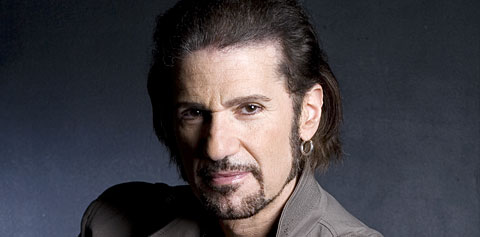
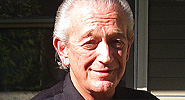

 In recent years, Musselwhite’s main guitar was a Gibson Nighthawk (“has a great tone for blues”), before he found his ultimate six-string. “I remember Luther Tucker talking about playing a ‘Strat’ with Little Walter – meaning a Harmony Stratotone, not a Fender Stratocaster,” he details. “John Hammond got a reissue and so did Tom Waits. What I liked about it was that fat neck. I felt like I could really dig into it, and it just seemed so perfect for blues – the way it felt and sounded. Smokey Hormel and Marc Ribot both had old ones, and Marc said, ‘You know, it’s really the only guitar worth having.’ Coincidentally, a few days later, Blewett Thomas, an old friend who was friends with Big Joe Williams, told me there was one [for sale] cheap. So I snapped it up.”
In recent years, Musselwhite’s main guitar was a Gibson Nighthawk (“has a great tone for blues”), before he found his ultimate six-string. “I remember Luther Tucker talking about playing a ‘Strat’ with Little Walter – meaning a Harmony Stratotone, not a Fender Stratocaster,” he details. “John Hammond got a reissue and so did Tom Waits. What I liked about it was that fat neck. I felt like I could really dig into it, and it just seemed so perfect for blues – the way it felt and sounded. Smokey Hormel and Marc Ribot both had old ones, and Marc said, ‘You know, it’s really the only guitar worth having.’ Coincidentally, a few days later, Blewett Thomas, an old friend who was friends with Big Joe Williams, told me there was one [for sale] cheap. So I snapped it up.”